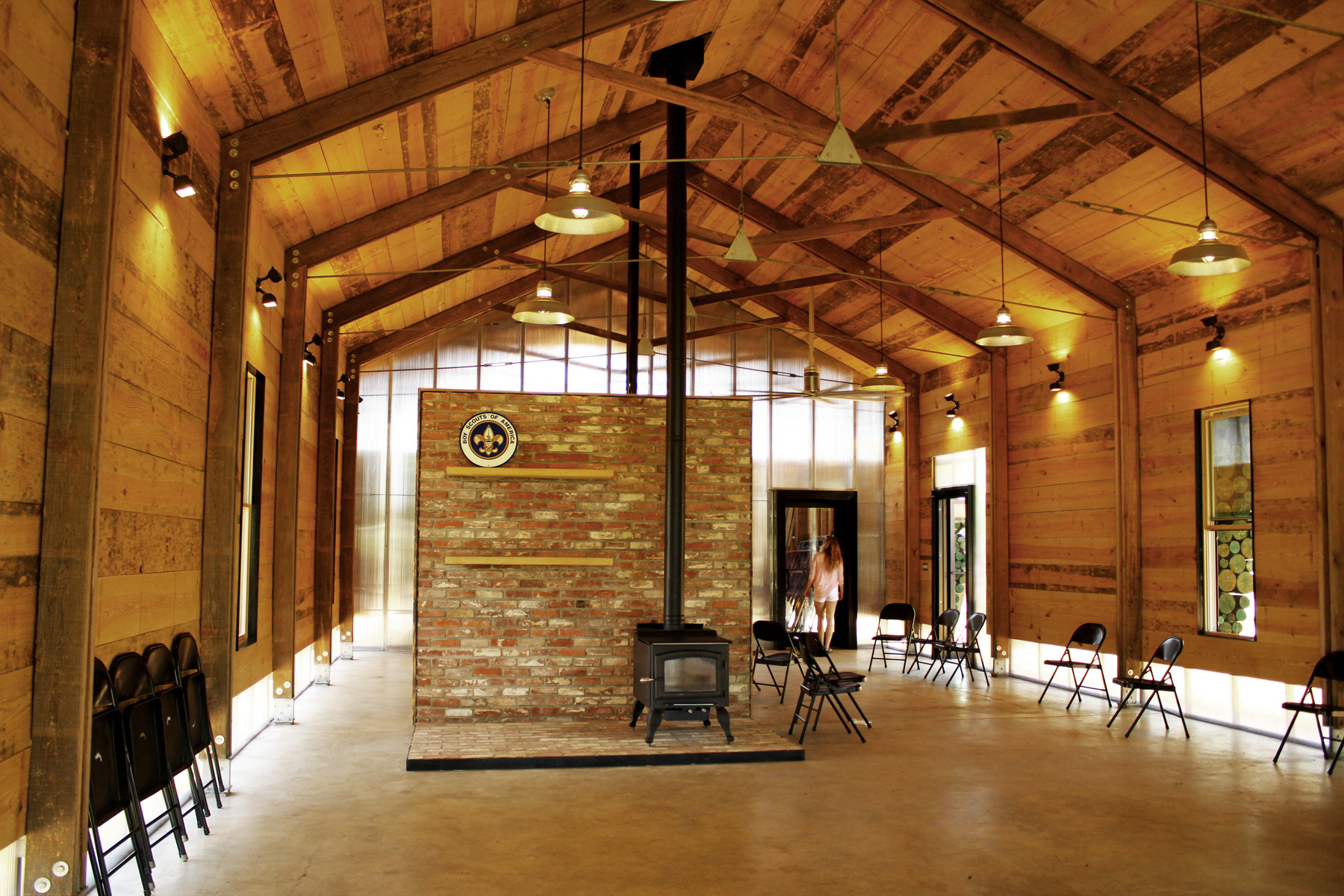
Hale County, Alabama is a place full of architects, and often high profile ones. The likes of Todd Williams and Billie Tsien have ventured there, as have Peter Gluck and Xavier Vendrell, all to converge upon Auburn University’s Rural Studio. Despite the influx of designers, it is a place where an ensemble of all black will mark you as an outsider. I learned this during my year as an Outreach student there, and was reminded recently when I ventured south for the Studio’s 20th Anniversary celebration. While the most recent graduates took the stage, I watched the ceremony from the bed of a pick-up truck, indulging in corn-coated, deep-fried catfish, and reflected on what the organization represents to the architecture world.
Since its founding in 1993 by D.K. Ruth and Samuel Mockbee, the Studio has built more than 150 projects and educated over 600 students. Those first years evoke images of stacked tires coated with concrete and car windshields pinned up like shingles over a modest chapel. In the past two decades, leadership has passed from Mockbee and Ruth to the current director, Andrew Freear, and the palette has evolved to feature more conventional materials, but the Studio remains faithful to its founding principal: all people deserve good design. Now that it is officially a twenty-something, what can Rural Studio teach us about good design?


